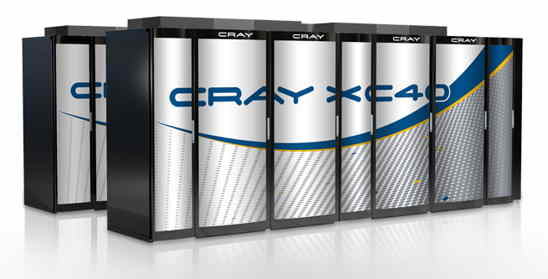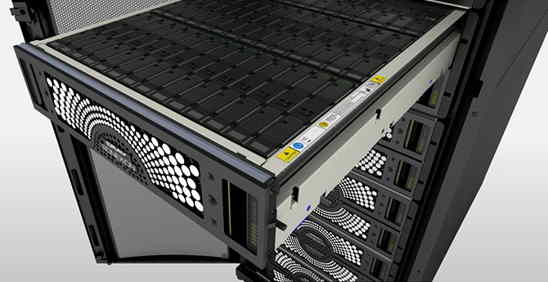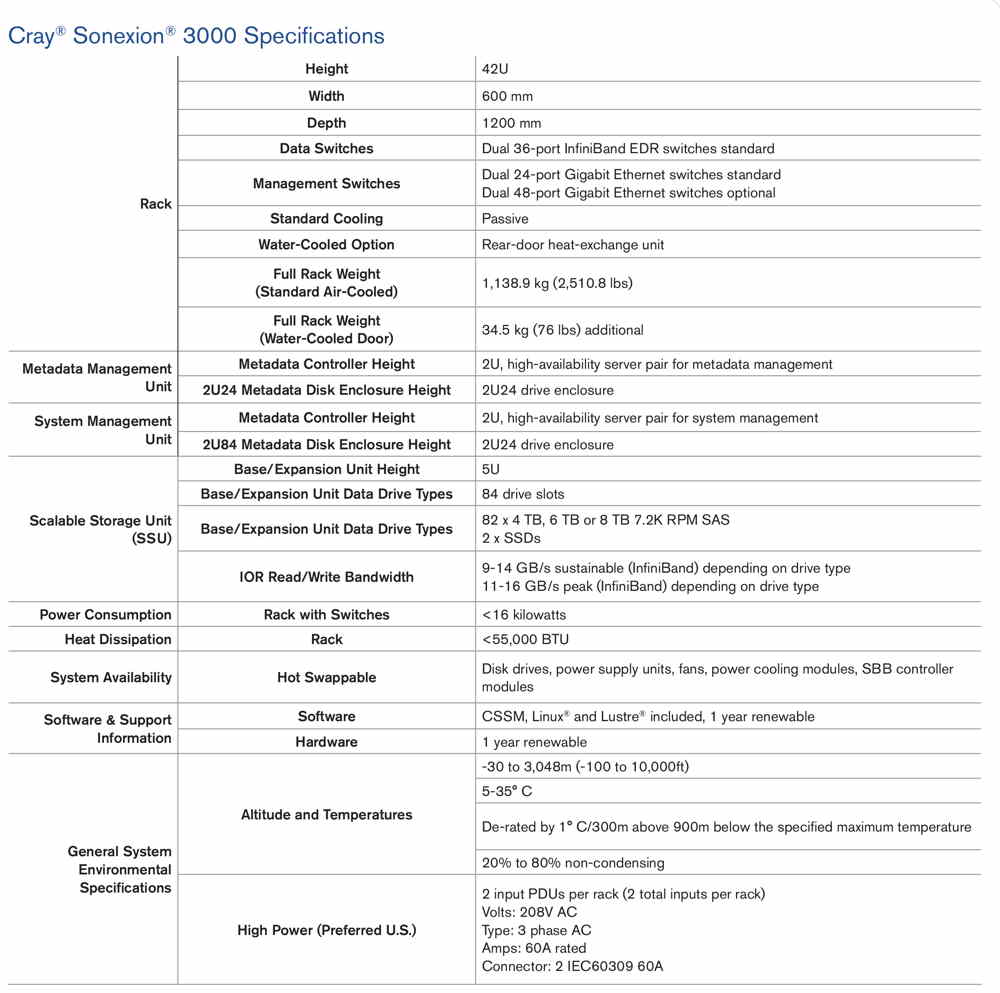Cray XC HPC and High Performace Storage Systems
With Xeon Phi processor family and Sonexion 3000 scale-out Lustre storage system at nearly 100GB/s in single rack
This is a Press Release edited by StorageNewsletter.com on June 30, 2016 at 2:24 pmAt the 2016 International Supercomputing Conference in Frankfurt, Germany, Cray Inc. introduced performance breakthroughs that will provide customers with the Cray XC supercomputers and Sonexion storage systems.

The Intel Corp.‘s Xeon Phi processor family, formerly code named ‘Knights Landing’, is available in the Cray XC series of supercomputers, offering performance of over half-a-petaflop per cabinet – a 2X performance boost over previous generations. The company also unveiled the Sonexion 3000 scale-out Lustre storage system, which features capacity- and performance-optimized configurations. In a performance-optimized configuration, theSonexion system delivers nearly 100GB/s of performance in a single rack.
“Our customers are taking on increasingly complex computational problems that are expanding the boundaries of supercomputing and storage performance capabilities,” said Ryan Waite, SVP, products, Cray. “We partner closely with our customers to understand their unique requirements and deliver new systems that deliver peak performance. For many of our customers, Intel Xeon Phi processors and Lustre parallel file systems are critical components of their supercomputing infrastructure. Our close collaboration with Intel helps to ensure our Intel Xeon Phi processor-based solutions scale to the most demanding performance requirements and our close partnership with Seagate helps scale Lustre to new levels of performance and stability.”
The XC supercomputer is an adaptive supercomputing system that supports different processing and storage technologies in the same architecture. It also features a fully-integrated software ecosystem that leverages firm’s vast expertise in many-core and multi-core computing environments. With the new Xeon Phi processor, XC customers can take advantage of the company’s programming environment to optimize applications for best performance and memory usage. The software stack in the XC system also includes enhancements to help customers optimize code and best utilize the new high bandwidth memory integrated in the Xeon Phi processor.
The company is deploying supercomputers with the Xeon Phi processor, and several top supercomputing centers have already signed large contracts for XC supercomputers with Intel’s new processor. These early systems include the ‘Cori’ system at the U.S. Department of Energy’s (DOE) National Energy Research Scientific Computing Center (NERSC); the ‘Trinity’ system at the National Nuclear Security Administration; and the ‘Theta’ system at the DOE’s Argonne Leadership Computing Facility at Argonne National Laboratory.
“As a foundational element of the Intel Scalable System Framework, the Intel Xeon Phi processor is optimized for scalability, compute parallelism, and memory bandwidth,” said Charles Wuischpard, VP, data center group, and GM, HPC platform group, Intel. “Cray XC systems feature highly innovative supercomputing technologies, and we are excited that our collaboration with Cray continues to enable researchers and scientists to achieve breakthrough innovations and discoveries.“
Designed to match increases in compute performance, the Sonexion 3000 system builds on firm’s expertise in performance-engineered, parallel storage systems for supercomputing and big data analytics. Compared to conventional Lustre solutions, the Sonexion 3000 system is designed to scale more efficiently, deliver up to 38% more real-world throughput per rack unit, and reduce TCO by up to 25%. The new storage system is pre-integrated and tested, and Cray offers a single point of support for all hardware and software.
“Many organizations now need deep expertise to develop scalable, parallel applications that can extract the full value of high performance, scale-out storage and compute resources,” said Nik Rouda, senior analyst, Enterprise Strategy Group “Cray is closing the gap, bringing supercomputing capabilities to big data and analytics in the enterprise.“
















 Subscribe to our free daily newsletter
Subscribe to our free daily newsletter


